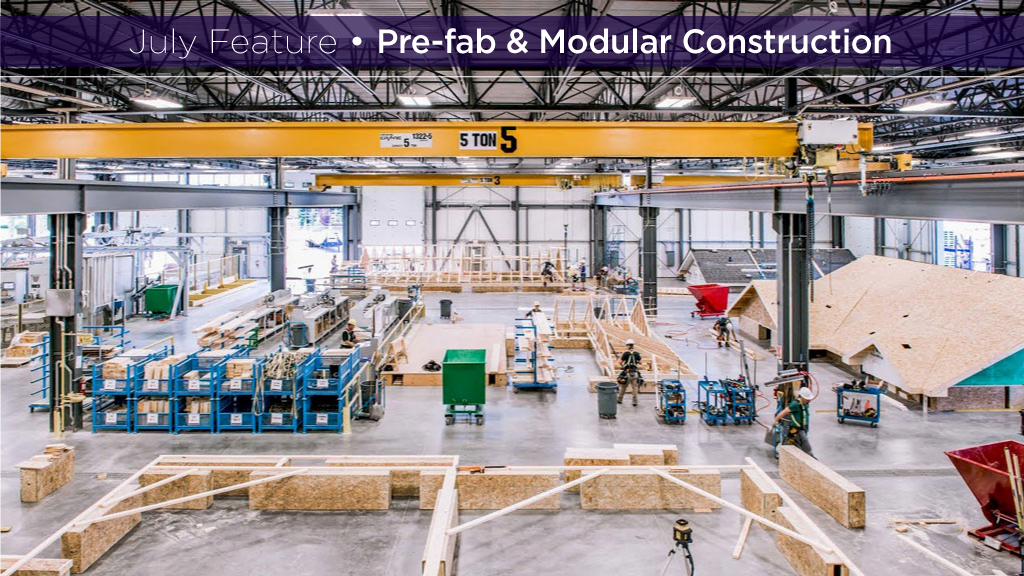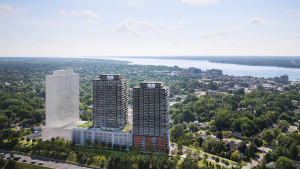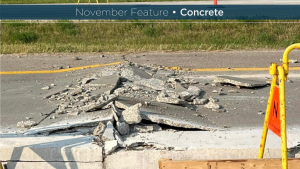Government initiatives, both federally and provincially, addressing the national housing shortage are beginning to intersect. Together, these seek to speed up housing construction through pre-approved housing designs, modular processes and more efficient building approval processes.
The proposed the launch of a new Homebuilding Technology and Innovation Fund. This is intended to, “scale up, commercialize, and promote adoption of innovative housing technologies and materials in Canada’s homebuilding industry, including for modular and prefabricated homes.”
The fund will deliver $50 million through , with further leverage through the private sector and other orders of government towards a proposed target of $200 million.
The budget also earmarked at least $500 million, made available through the CMHC’s , in low-cost financing for new apartments built using prefabricated or innovative homebuilding techniques.
The says it intends to, “learn more about how modular construction can fit into our province’s housing supply.”
Through outreach discussions with modular housing developers and providers across Ontario, Canada and North America, it hopes, “to gather practical and technical insights about construction costs, timelines, economies of scale, regional differences and supply chains to inform further actions to deploy modular housing in Ontario.”
Ontario has also pledged to address red tape by working with both municipalities and the federal government, and by continuing “to listen and recognize the struggles our municipal partners are facing.”
However, no funding commitments were part of these announcements.
Addressing the matter of building approvals, the National Research Council will soon begin .
These will “address regulatory barriers, including point access blocks and single egress designs, and streamline the inspection process” in an effort to identify ways to reduce duplication between factory inspections of modular home components and onsite building inspections, plus other regulatory barriers to factory-built housing in Canada.
But wait. There’s more.
The federal government will invest $11.6 million in the first phase of a catalogue of up to 50 low-rise housing designs to be released this fall, followed up later with mid-rise and single family home designs. Some of these would be suitable for modularization. Meanwhile, several municipalities across the country have released their own pre-approved home designs for infill lots and laneway housing.
How could these modular initiatives and a federal home design catalogue develop more off-site housing construction in Canada?
Chris Hill heads modular home builder in Vancouver. He has also founded , an open-source, collaborative design resource for other modular builders. Hill told the Daily Commercial News he is currently consulting with a number of large-scale developers to help them understand available funding and how to utilize it to create off-site construction strategies.
Hill said one of the most important benefits from the flurry of recent government announcements in support of modular home construction is the high level of interest being created.
“Even if the feds don’t do anything, the fact that at this point they’re talking about it starts to provide confidence. It’s at a feverish pitch.”
At the same time, Hill offered a level of caution.
While modular processes can certainly offer speed, Hill feels off-site fabrication should be more than simply stick construction in a factory.
“We risk losing out on a lot of the potential of off-site construction by trying to do it the way we’ve always done it.”
North America has struggled with modular homebuilding. A says less than four per cent of current U.S. housing stock has been built using modular methods. Meanwhile, over 80 per cent of single family homes in Sweden and 28 per cent in Japan .
At the same time, industry productivity has been lagging. in the U.S. that took an average of four months to complete in 1971 took over 10 months in 2022.
Hill offered a partial explanation. New houses today are much larger and are more complex than 50 years ago, particularly in terms of moisture control, insulation and air barrier systems. Construction delays have also become more bureaucratic in nature, something recent government announcements are beginning to address. Here, Hill sees modularization actually helping to cut red tape.
Certified off-site fabricators with quality assurance/quality control systems could become ultimately responsible, he says, rather than inspectors doing a quick walk-through at various stages in each individual home.
“The liability would rest with the factory to produce what they say,” Hill explained. “They produce under certification. The burden is no longer with the municipality. As long as they maintain their certification, the inspection process is a lot cleaner and faster.”
The level of robotics and factory automation suitable in Canada will likely vary across the country in response to regional supply chain procurement systems and the matching of production capabilities with demand across different markets.
However, governments at various levels are laying important groundwork for improvements that will hopefully result in overall progress. For his part, Hill intends to focus on prefabricated componentry and to keep his company “small and nimble.”
“There’s no silver spoon, no easy obvious answer,” said Hill. “It’s a very complex problem due to regionalization and the chaos of what construction is.”











Recent Comments
comments for this post are closed